Follow these simple tips on how to make the Perfect Poached Egg. With tips and tricks to make your poached egg perfect every time.
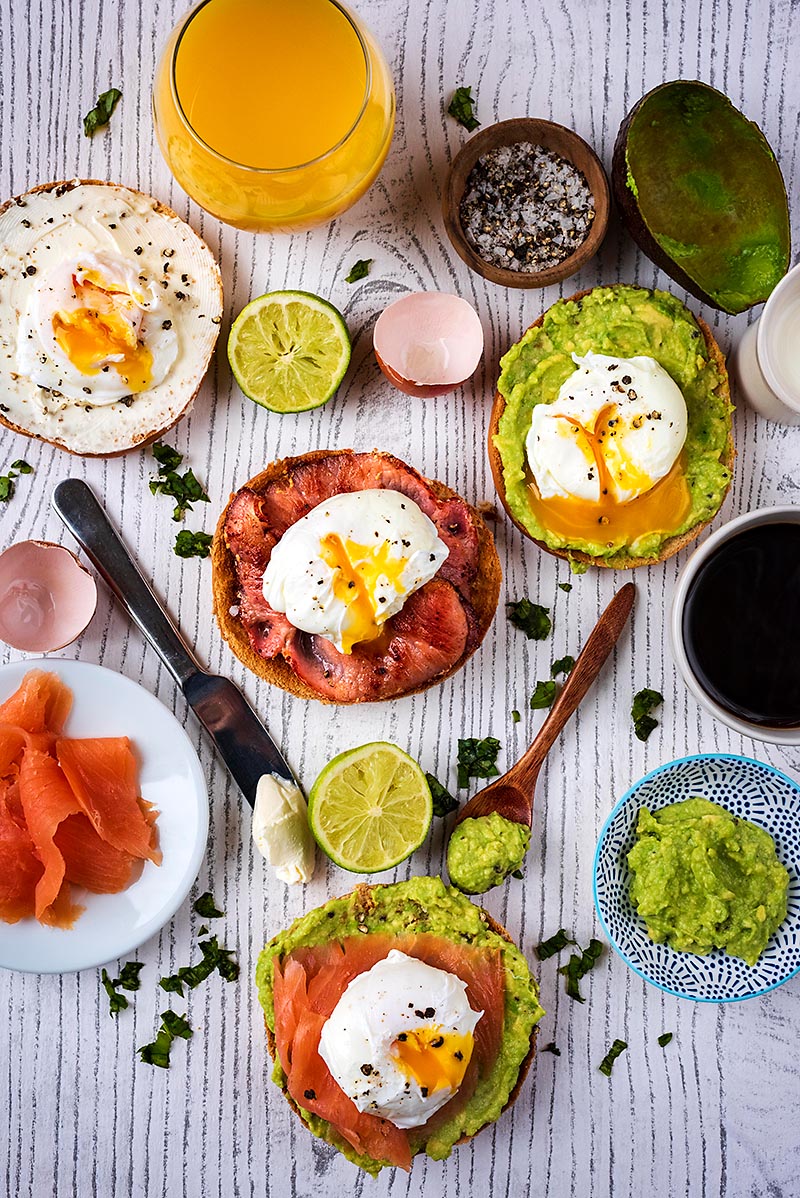
I could eat poached eggs for breakfast every day and never get bored, I love them, but they have to be done right and for me that means a running yolk. Don't like a runny yolk? Just cook them for longer!
My favourite way to eat poached eggs? Usually on toast with smoked salmon, avocado and chives. It is pretty much my perfect meal. I also get asked if eggs are bad and how many I eat a day.
Firstly, no, eggs are not bad. The cholesterol that eggs contain has almost no affect on your body. Your cholesterol levels are affected more by saturated and trans fats. So, eat eggs with confidence that your cholesterol won't be affected. Do be aware of what you are eating your eggs with though.
Eggs are awesome! Make sure you always go for good quality free range eggs. And the fresher, the better.
Jump to:
Why make poached eggs?
- Ready in a few minutes
- Only 78 calories in each egg
- A good source of proteins and vitamins (including vitamin D)
- Perfect for breakfast, lunch or dinner
Step by step
Step 1: It is best to use eggs that are room temperature, so remove your eggs from the fridge at least 30 minutes before cooking.
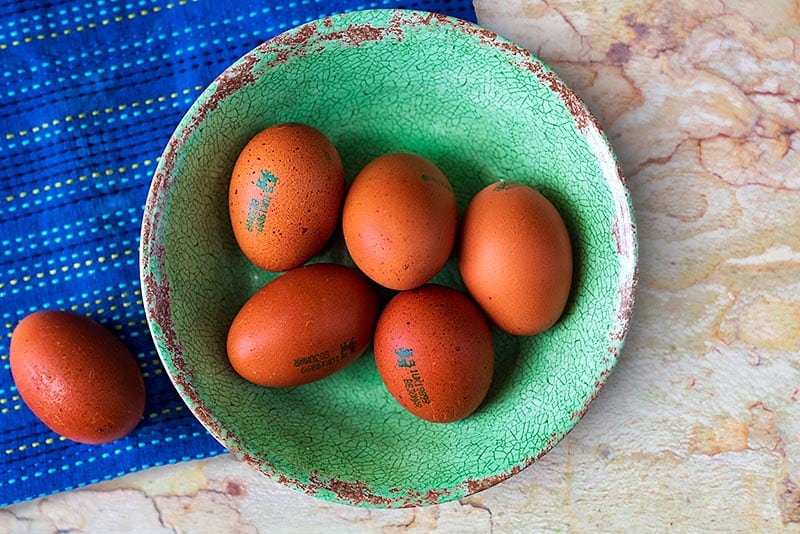
Add a tablespoon of vinegar to a large pan (you can use any vinegar, but I find rice vinegar works best)and add boiling water. Add a generous pinch of sea salt to the water.
The vinegar and salt are the key part to this, as it is the vinegar that keeps the whites together and helps you get a perfect poached egg. You can't taste the vinegar when eating the eggs either.
The salt makes the water more dense, therefore lifting the eggs off the bottom of the pan and prevents them from sticking.
Bring the water back to the boil.
Step 2: Here's the clever bit! Using a spoon, gently place the whole uncracked eggs into the boiling water for 30 seconds each. This will partially boil the outer part of the egg white, making the egg more stable and less likely to spread out when cracked into the water.
If the water isn't deep enough to cover the egg, rotate it over after 15 seconds and boil for another 15 seconds. IMPORTANT: Do not boil the eggs for more than 30 seconds.
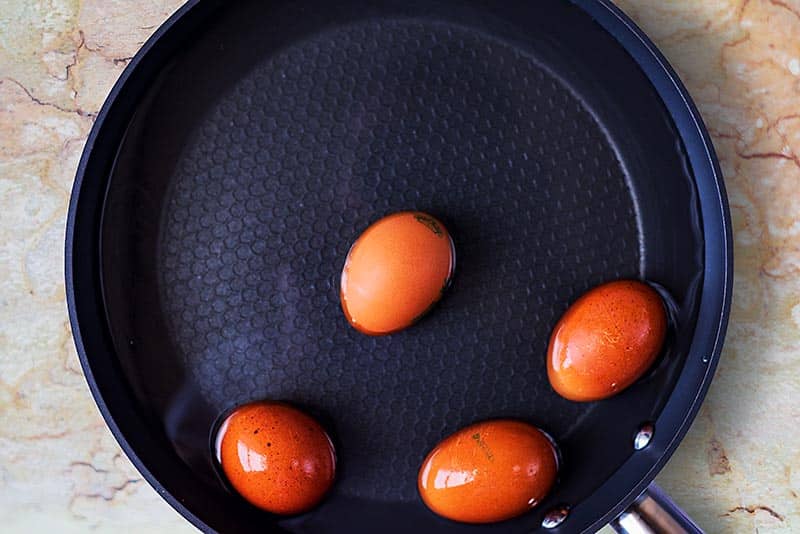
Using a slotted spoon, remove the eggs from the pan and turn the heat down to a gentle simmer.
Step 3: Use a sharp, heavy knife to break the egg shell and gently crack the egg into the simmering water. Hold the egg as close to the surface of the water as you can, without scalding your hands. Open the cracked egg just enough for the yolk to drop out, pulling the white with it.
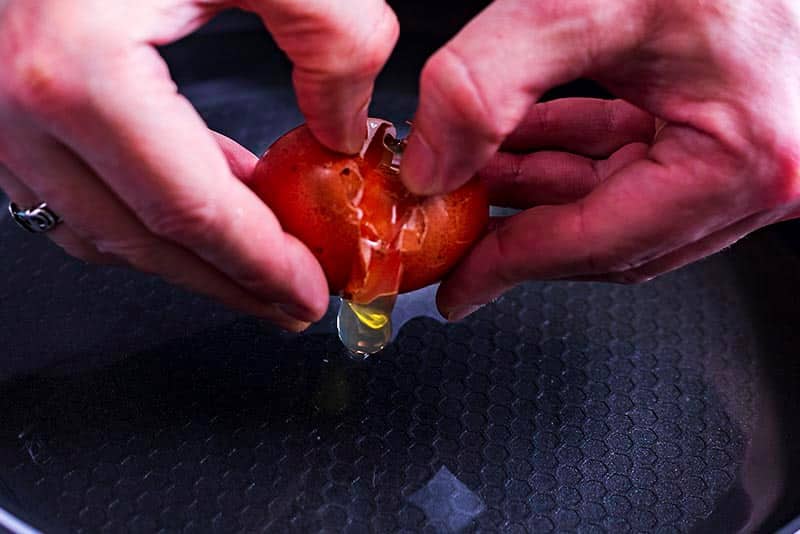
You can also add the egg to a cup or ramekin and gently pour it in, but I have more success with just cracking it in.
Step 4: Cook the eggs on a gentle simmer for 3 minutes. If you want a hard yolk, cook it for 1 minute longer. Turn the heat off but leave the eggs in the water for an additional minute.
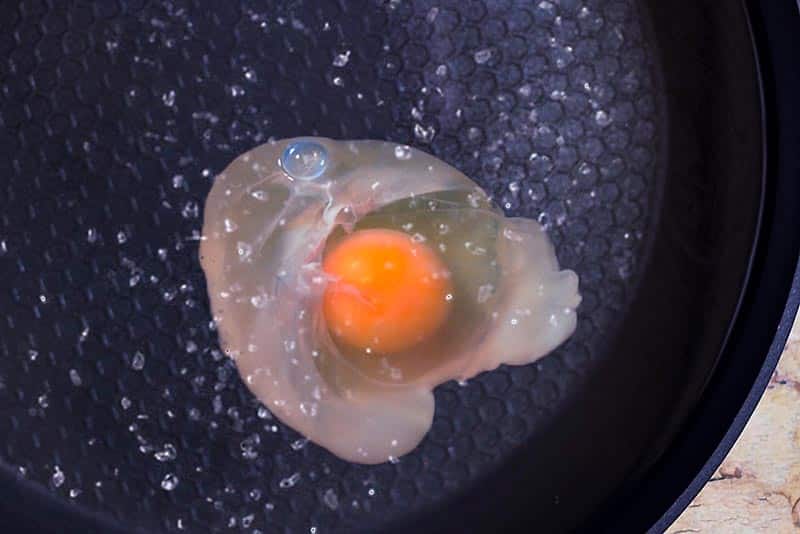
Step 5: Use a flat, slotted spatula to remove the eggs from the pan and place them on kitchen paper. This will absorb any water from the egg, meaning you won't get soggy toast!
Next, hold the edge of the spatula next to the egg and using the edge of the kitchen paper, gently flip the egg onto the spatula so it is upside down. Use your finger to gently press the underneath of the yolk to test if it is cooked to your liking. If not, return to the water for another 30-60 seconds.
What eggs to use
The fresher, the better. Fresh eggs hold together better and they also taste better. With eggs, you do get what you pay for, so make sure you use a good quality, free-range egg.
Sieve method
The method used in this how-to uses a pre-boiling technique. Instead of this, if you have a very fine mesh sieve, crack the eggs into the mesh over a bowl to remove the thinner egg white. The thicker white will remain around the egg, where you can then transfer the egg to another bowl or straight into the pan to cook. However, you need to be extremely careful with the sieve method as the yolks can easily break.
What to serve poached eggs with
Poached eggs are delicious just on some simple buttered toast with a pinch of salt and pepper. Maybe add some hot sauce for a little kick of heat. To take it further, why not add some smashed avocado to the toast? Maybe some smoked salmon? Or some wilted spinach.
Here are some other things that you can add a poached egg to:
- They are great in a bacon sandwich
- Add one to a burger
- Put one on top of a pizza
- Top a salad with a poached egg
- Make a simple spaghetti dish using our easy pasta sauce and top with a poached egg
- Shakshuka is a way of poaching eggs in a spicy tomato sauce - great for breakfast, lunch or dinner
- Huevos Rancheros - a traditional Mexican breakfast that can use poach or fried egg
- Top a comforting stew with a poached egg
- Add it to the top of Nasi Goreng (Indonesian Fried Rice) instead of the traditional omelette.
FAQs
Yes you can. If you are preparing poached eggs in advance, make sure you have a large bowl of iced water ready. Once the eggs are cooked to your liking, remove from the pan and transfer to the iced water. This will stop the cooking process immediately and keep them just right. You can keep them like this in the fridge for 3-4 days. To reheat, put some hot water in a bowl and put the eggs in it for 20-30 seconds, until warmed through.
More egg recipes
If you’ve tried this perfect poached egg recipe, let us know how you got on in the comments below.
Tag us in your creations on Instagram @hungryhealthyhappy - Use the hashtag #hungryhealthyhappy too.
Recipe
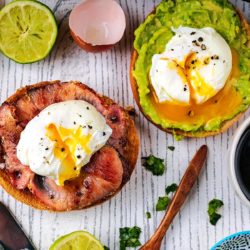
How To Make The Perfect Poached Egg
Ingredients
- 4 Eggs - (free range are best)
- Water - boiled
- 1 tablespoon Vinegar - (rice vinegar is best)
- Sea salt
Instructions
- It is best to use eggs that are room temperature, so remove your eggs from the fridge at least 30 minutes before cooking.
- Add a tablespoon of vinegar to a large pan (you can use any vinegar, but I find rice vinegar works best) and add boiling water. Add a generous pinch of sea salt to the water.The vinegar and salt are the key part to this, as it is the vinegar that keeps the whites together and helps you get a perfect poached egg. You can't taste the vinegar when eating the eggs either. The salt makes the water more dense, therefore lifting the eggs off the bottom of the pan and prevents them from sticking.
- Bring the water back to the boil.
- Here's the clever bit! Using a spoon, gently place the whole uncracked eggs into the boiling water for 30 seconds each. This will partially boil the outer part of the egg white, making the egg more stable and less likely to spread out when cracked into the water.If the water isn't deep enough to cover the egg, rotate it over after 15 seconds and boil for another 15 seconds. IMPORTANT: Do not boil the eggs for more than 30 seconds.Using a slotted spoon, remove the eggs from the pan and turn the heat down to a gentle simmer.
- Use a sharp, heavy knife to break the egg shell and gently crack the egg into the simmering water. Hold the egg as close to the surface of the water as you can, without scalding your hands. Open the cracked egg just enough for the yolk to drop out, pulling the white with it.You can also add the egg to a cup or ramekin and gently pour it in, but I have more success with just cracking it in.
- Cook the eggs on a gentle simmer for 3 minutes. If you want a hard yolk, cook it for 1 minute longer. Turn the heat off but leave the eggs in the water for an additional minute.
- Use a flat, slotted spatula to remove the eggs from the pan and place them on kitchen paper. This will absorb any water from the egg, meaning you won't get soggy toast!
- Next, hold the edge of the spatula next to the egg and using the edge of the kitchen paper, gently flip the egg onto the spatula so it is upside down. Use your finger to gently press the yolk to test if it is cooked to your liking. If not, return to the water for another 30-60 seconds.
- Serve on top of smoked salmon, avocado or both on toast.
Nutritional Information
The nutritional information provided is approximate and is calculated using online tools. Information can vary depending on various factors, but we have endeavoured to be as accurate as possible.
As all appliances vary, cooking times are a guide. Please note that by changing the serving size, the cooking time may also need to be altered.



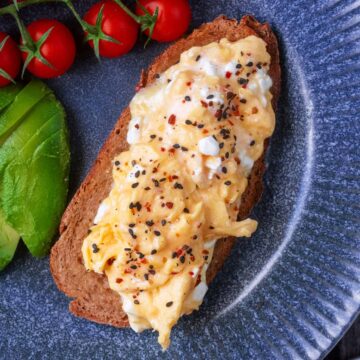

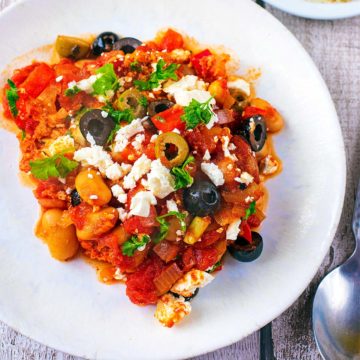
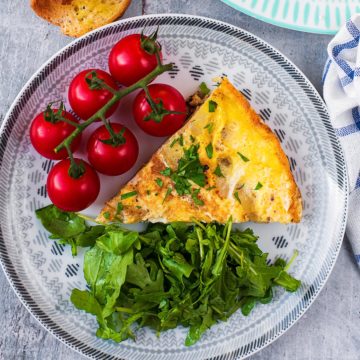
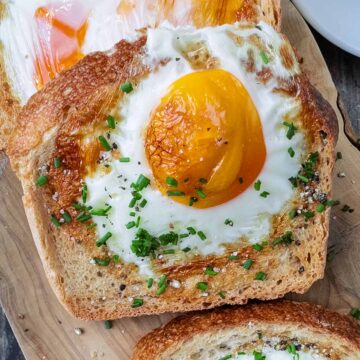
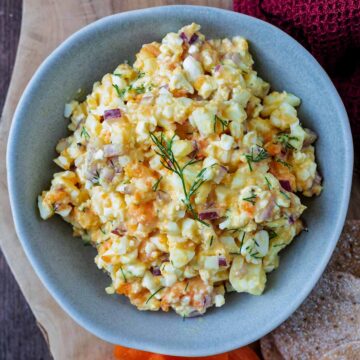
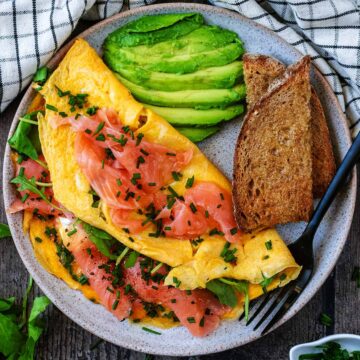
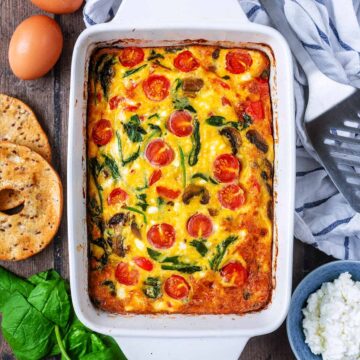
Emma Drage says
I've been making mediocre poached eggs for years, thought I'd try your method and they were perfect! Thanks for the tips.
Rich says
Just made my first poached egg! Tried your toast, avocado, Tomato and smoked salmon with it. Wow!! New breakfast staple!
Dannii says
Yay! Congrats on your first poached egg. Your breakfasts will never be the same :)
Mary says
Is this following my poor attempt at poaching eggs on the blog last week?! Haha! I'll be giving this way a go and hoping for better results! :P
Dannii says
Haha, I didn't see that. No, just because I get so many compliments on my poached eggs.
Claire Thomas says
I can't tell you how much trouble I have had with poached eggs but this week I cracked it (so to speak)! Am going to try your method too and see if I can make it two in a row!
Dannii says
I like the little egg joke there ;)
Jemma @ Celery and Cupcakes says
I adore poached eggs but have never tried to cook them myself. This looks like such a fool proof method!
Dannii says
You really should give it a go. Poached eggs are the best!
lucie says
This looks to die for girl! Your blogs makes me hungry =]
Dannii says
My blog makes me hungry too haha
Anna says
My poached eggs always turn out rubbish. I can never not overdo the yolks! Ben is always disappointed :( great tips!
Dannii says
I get really angry if I accidentally leave them on for too long and overdo the yolks. It is like a waste. Hope these tips help!
lauraagarwilson (keepinghealthygettingstylish) says
I love a poached egg but usually I'm too lazy and just fry them instead, although they never compare to the way the egg white is cooked with poached!
Dannii says
Eggs fried in coconut oil are so, so good too though.
Katie Bryson says
That's a nice How-To Dannii... I've never thought to use a frying pan and imagine it's a lot easier and can fit more in than the saucepan I normally use :-)
Dannii says
I used to use a saucepan too, but when we got this big frying pan, I started using it and it make a lot of difference. There is less room for the eggs to move around too.
Matt @ Runner Savvy says
Poached eggs are da bomb! I like mine scrambled with cheese or over easy.
Dannii says
Scrambled eggs are awesome too, as you can throw in so many other things. A great way to use up leftover veggies.
Sally says
Decided to give this method a try and I was pretty amazed they turned out so well. I had mine on an English Muffin with some Vegemite (I'm Australian), and the combination was delicious! Thanks for sharing your tips!
Dannii says
You're welcome! I am glad that the how to guide helped you. Now you can have perfect poached eggs every day :)